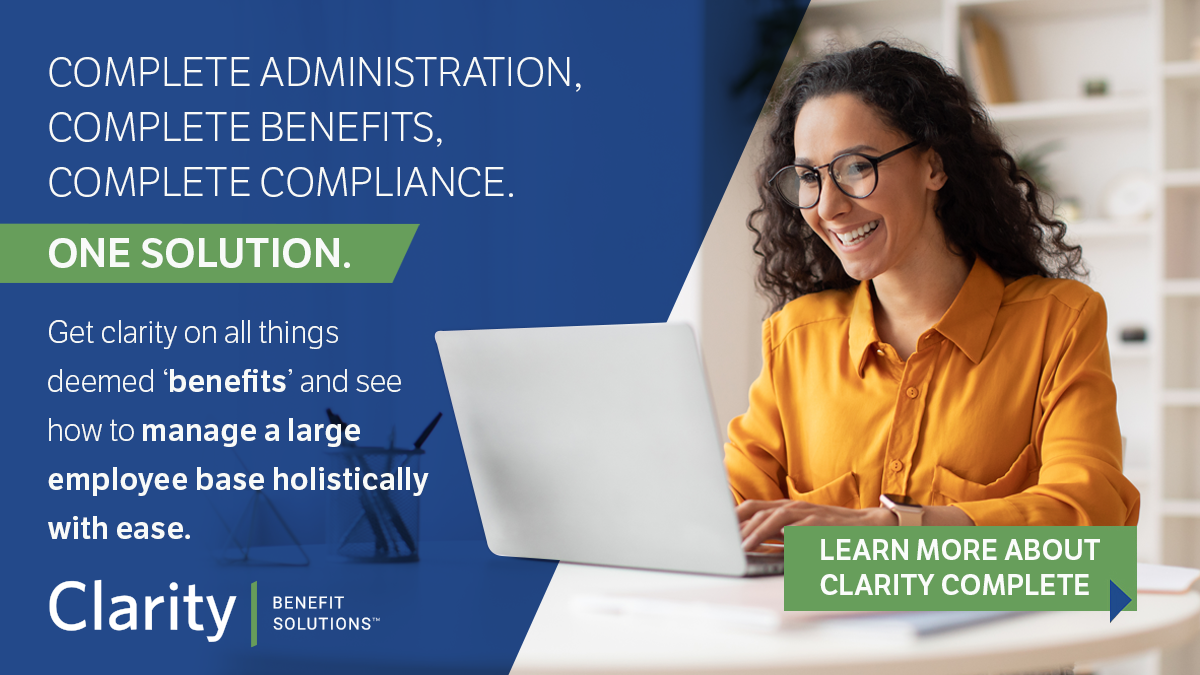
You’re preparing for open enrollment—you’ve already taken the time to carefully select benefit options that suit your employees. But you’re not done yet. Avoid last minute issues and complicated questions by being proactive about strategizing and communicating necessary information to employees.
To help you prepare, below is a list of the top open enrollment pain points according to a survey of HR professionals:

Source: https://www.macdonaldconsultants.com/benefits/5_Best_Practices_For_Your_Most_Successful_Open_Enrollment_Yet.pdf
Give yourself the best chance at a successful, seamless enrollment season with this open enrollment toolkit.
Communication Tools
The biggest mistake employers can make before open enrollment is not preparing. Communication is essential to preparation, and it’s important to be thorough and start early. Make a detailed plan using information from the previous year as a guideline and platform for improvement.
Assess the previous year
Take the time to analyze the data from the previous year, as well as the employee’s experiences and use it to dictate how you choose to educate employees for the coming open enrollment season.
Hold a strategy meeting with key stakeholders at your company and review every detail of the previous year’s enrollment process. Discuss the percentage of employees who are likely to change their benefits package and what they may be looking for. Analyze your employee demographics, which types of educational tools to use, the timeline of distribution, and what issues are likely to arise along the way.
Use this meeting to create action items and define the objectives for the approaching season. Then you can determine whether your education efforts and open enrollment as a whole were successful once it closes.
Create a checklist
Establish a list of quantifiable “hard” and “soft” goals to reach during the next open enrollment season. Hard goals are specific and based on numbers—for example, how many employees you want to enroll in 401(k) plans. However, soft goals should be based on employees' personal experiences. Once your checklist is created, develop a short survey for employees with questions about whether the educational tools were helpful, how easy or hard the process was, and if they felt prepared to make decisions once open enrollment started. Keep your list tight and efficient so you can focus on achieving each goal.

Source: https://www.shrm.org/hr-today/news/hr-magazine/0917/pages/6-simple-ways-to-improve-open-enrollment.aspx
Be Proactive with Education
Once you’ve created a communication strategy, you can start developing and sending out educational materials. Most employers should start doing this no later than two to three weeks before open enrollment, but if you have numerous materials, the earlier, the better.
Employees need time to read and digest the information before becoming familiar enough to ask specific questions. Do not wait for employees to ask for educational materials, be prepared and distribute them as soon as possible. When you’re proactive about education, the HR department can spend more time helping employees enroll rather answering last minute questions.
For this to be successful, you need a central location to store all educational materials, post answers to frequently asked questions, and give employees a platform for researching plans and giving feedback. An employee benefits software system acts as a central hub for all communication regarding benefits and enrollment, so communication is clearer than ever before.
Tools for Education
It’s important to consider how your employees absorb and retain information, and then develop educational tools that will communicate information in the most effective way. Make your materials engaging and informative and distribute them in an efficient way to ensure every employee has access. These tools should include information about each specific plan, deductibles, and out-of-pocket premiums.
Social Media
Social media can be a great supplemental way to distribute educational information to your employees—especially if your organization has multiple locations and hundreds of employees. For example, Northwell in New York employs 61,000 people in 21 hospitals and 450 ambulatory physician sites across Long Island, Staten Island, and Westchester. Because it’s so difficult to gather every employee in one place, they use social media to create a ”level communication playing field.”
First, you have to choose the right social networks for your company. If you already have a corporate page, this can become your go-to source for setting up a branded benefits information campaign. You can also use a variety of social networks to set up secure folders, groups, or pages to share important documents and videos with employees. Then, create a calendar for releasing educational information each week. Ensure you have a single point of contact for the network to engage with employees and answer any questions that may arise.
Social media is incredibly accessible and can be configured to send automatic notifications, which allows you to reach your employees with important information in a streamlined way. It also gives employees an opportunity to engage with the information and each other regarding benefits education. You can also use your platforms to promote current company benefits and perks.
Handouts and Flyers
Something as simple as a handout or flyer can give employees the information they need. However, for handouts and flyers to be effective, you have to think like a marketer and consider how to secure the reader’s attention. Use bold graphics, concise copy with snappy language and bullet points if needed, and jargon-free plain English. Lastly, ensure there's a clear call-to-action.
Even better than standard handouts is an interactive information platform that lets employees access the information on their own terms in a way that best applies to them. A benefits administration software platform lets them “try on” plans, research what benefits are best for them, and find the answer to questions they might not even know they had.
Meetings
While all of these other materials are important, you can’t skip the most necessary education tool: meetings. Whether you’re holding one-on-one question-and-answer sessions or large group get-togethers, face-to-face meetings can change how employees understand their benefits options. Create time in your schedule for employees to drop by with questions and schedule regular meetings to discuss any new benefits information.
But meetings can’t be successful if you aren’t prepared and educated yourself. Having software tools at your fingertips lets you walk employees through the enrollment process visually and makes educational material easily accessible for you and your employees.
Being proactive about communication and education before open enrollment arrives will give your employees the best opportunity to choose their perfect benefits package. Many employers do not take the time to educate their employees properly, which leaves them unsatisfied.
Clarity Benefit Solutions offers services to help employers succeed, visit our website to learn more.
Sources:
1. https://www.shrm.org/resourcesandtools/hr-topics/benefits/pages/open-enrollment-game-plan.aspx
2. https://www.benefitnews.com/news/social-media-benefits-friend-or-foe
3. https://www.benefitnews.com/news/how-to-have-a-more-successful-open-enrollment
